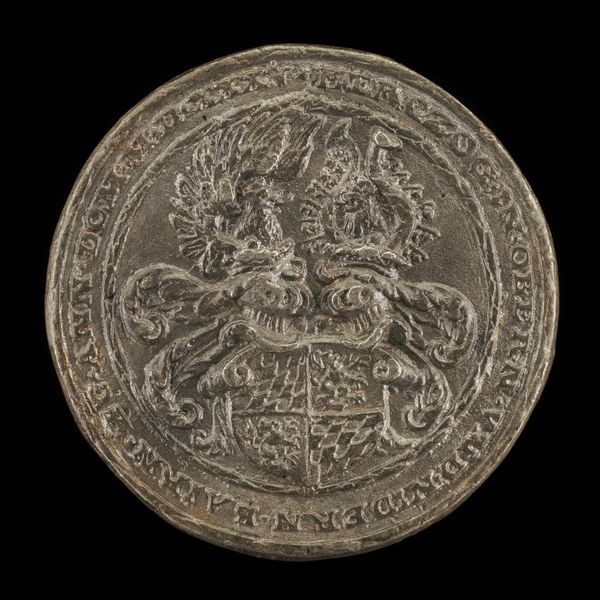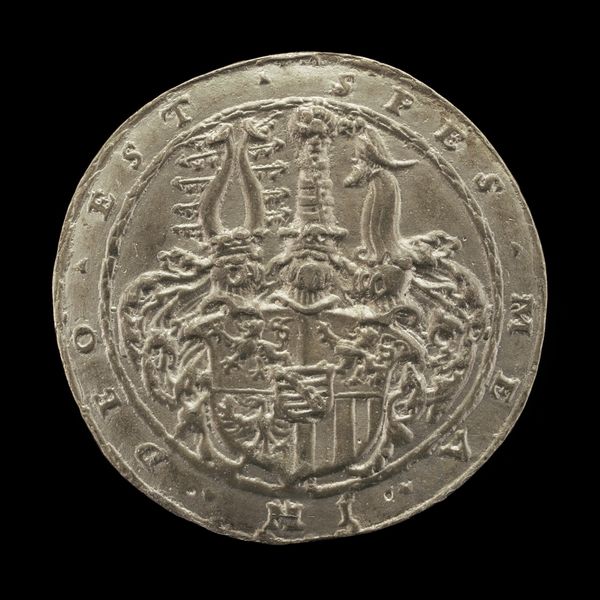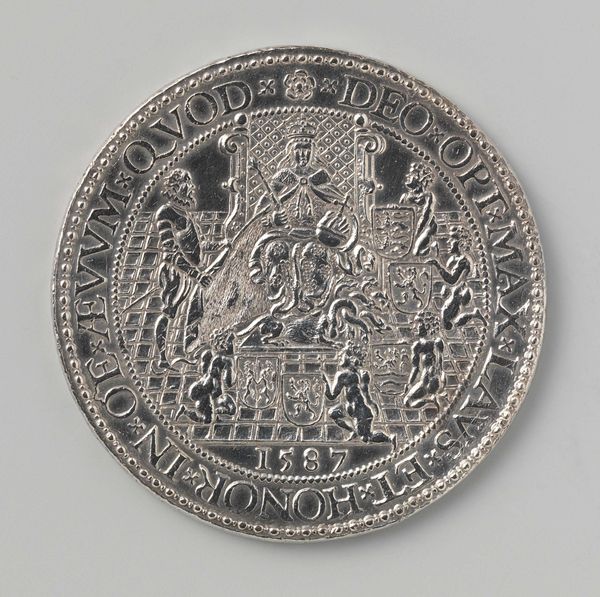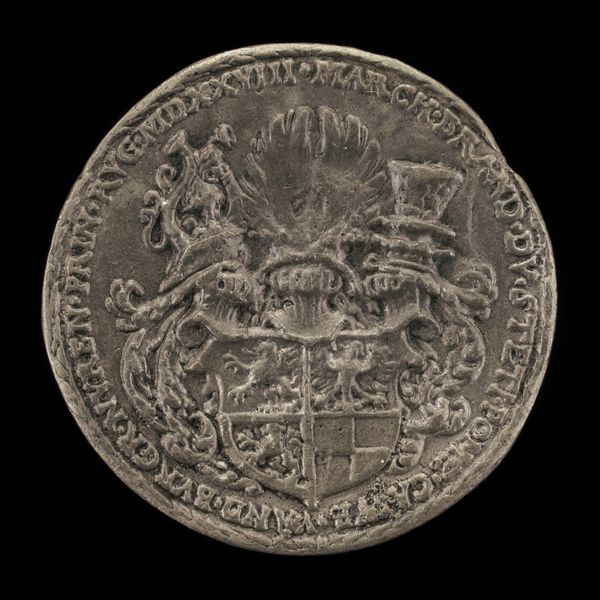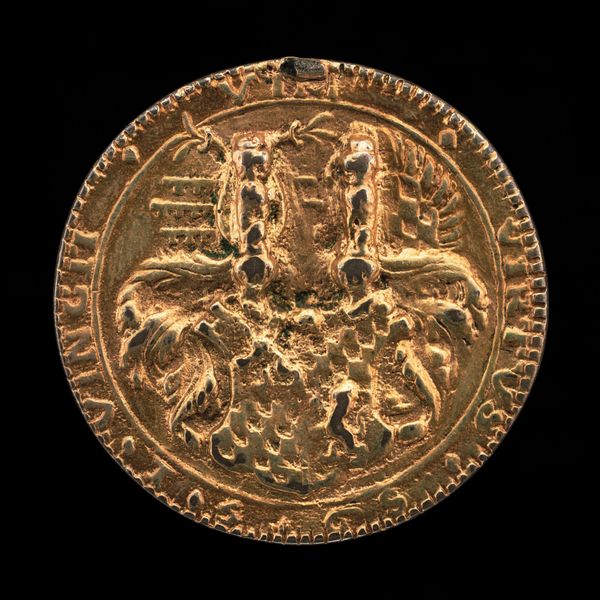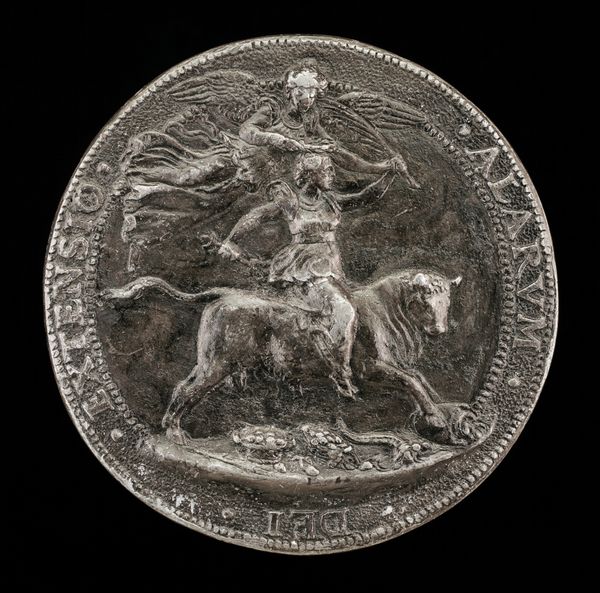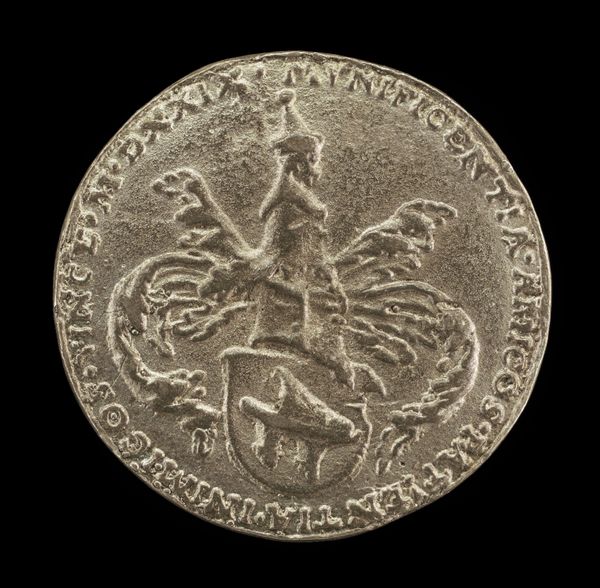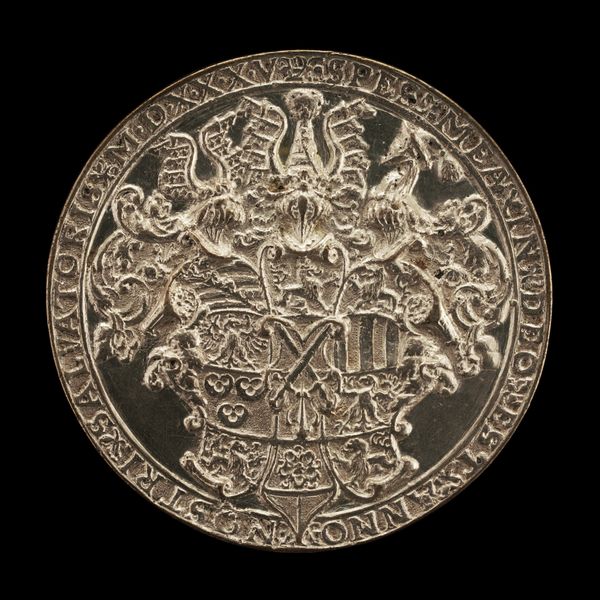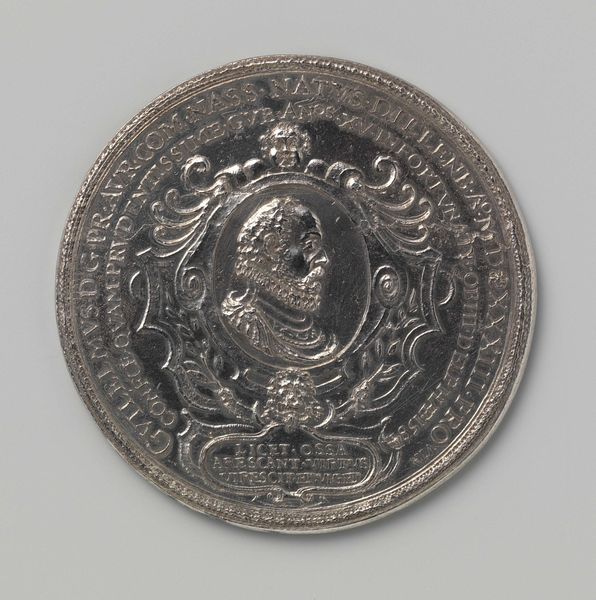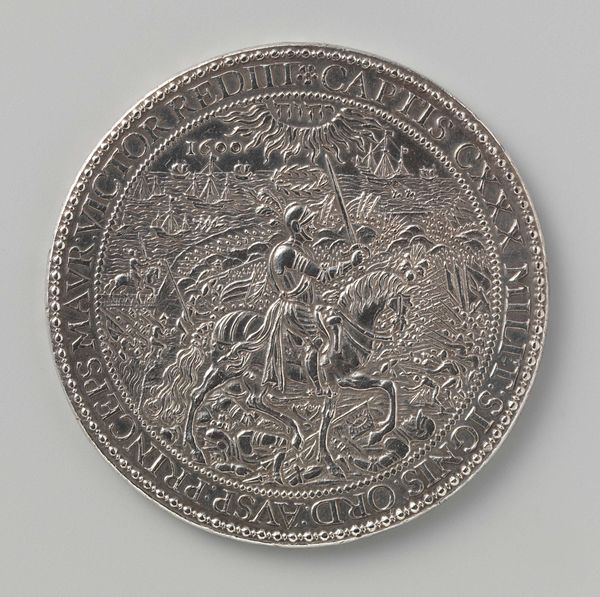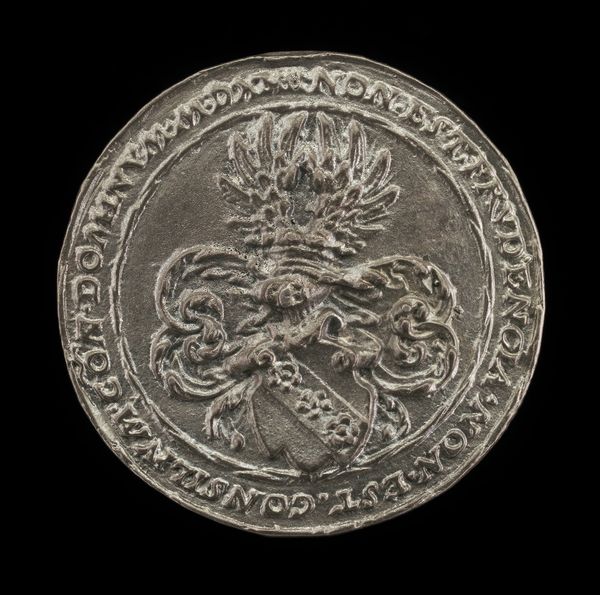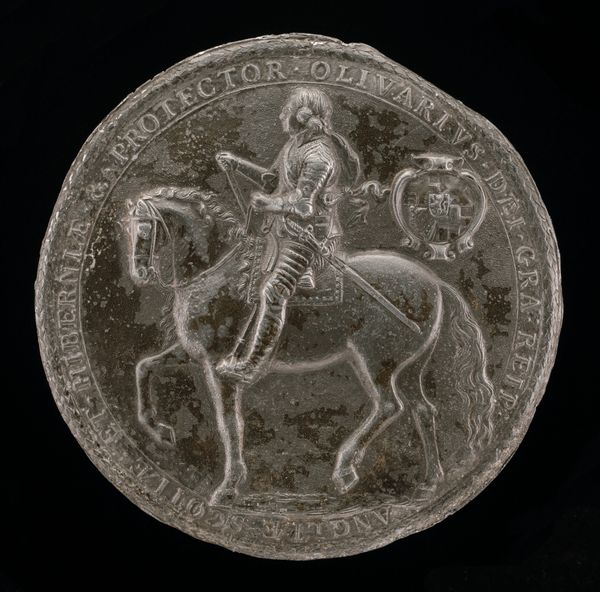![Double-headed Crowned Eagle on the Pillars of Hercules [reverse] by Ludwig Neufahrer](/_next/image?url=https%3A%2F%2Fd2w8kbdekdi1gv.cloudfront.net%2FeyJidWNrZXQiOiAiYXJ0ZXJhLWltYWdlcy1idWNrZXQiLCAia2V5IjogImFydHdvcmtzL2RhZjBhMjM4LWFjNmEtNGNiMS05ZWRmLWUxZjBhY2EzMmE5Zi9kYWYwYTIzOC1hYzZhLTRjYjEtOWVkZi1lMWYwYWNhMzJhOWZfZnVsbC5qcGciLCAiZWRpdHMiOiB7InJlc2l6ZSI6IHsid2lkdGgiOiAxOTIwLCAiaGVpZ2h0IjogMTkyMCwgImZpdCI6ICJpbnNpZGUifX19&w=3840&q=75)
Double-headed Crowned Eagle on the Pillars of Hercules [reverse] 1542
0:00
0:00
print, metal, sculpture
#
portrait
#
medal
#
medieval
# print
#
metal
#
stone
#
sculpture
#
sculpture
Dimensions: overall (diameter): 4.13 cm (1 5/8 in.) gross weight: 19.58 gr (0.043 lb.) axis: 12:00
Copyright: National Gallery of Art: CC0 1.0
This medal was crafted by Ludwig Neufahrer in the 16th century. Here we observe a double-headed eagle perched atop the Pillars of Hercules, potent symbols of imperial power and boundary. The eagle, with its dual gaze, evokes the Roman Empire's reach, adapted later by the Habsburgs to signify their vast dominion, ever watchful and encompassing. These pillars, derived from ancient myth, marked the edge of the known world, a limit for some but here, they serve as a foundation upon which the Habsburgs stake their claim. We see this image echoed through various epochs. The eagle, a primal symbol of strength, transcends mere heraldry. Consider its earlier, singular form in Roman standards—a symbol of military might. Or think how, in dreams, birds often represent the soaring aspirations of the self. The double-headed eagle, therefore, may be seen as the psyche's own struggle with duality, reflecting the inherent tensions within power itself. This iconography plays on our collective memory, evoking deep-seated emotions tied to power. As such, it creates a lasting impression long after our viewing.
Comments
No comments
Be the first to comment and join the conversation on the ultimate creative platform.
